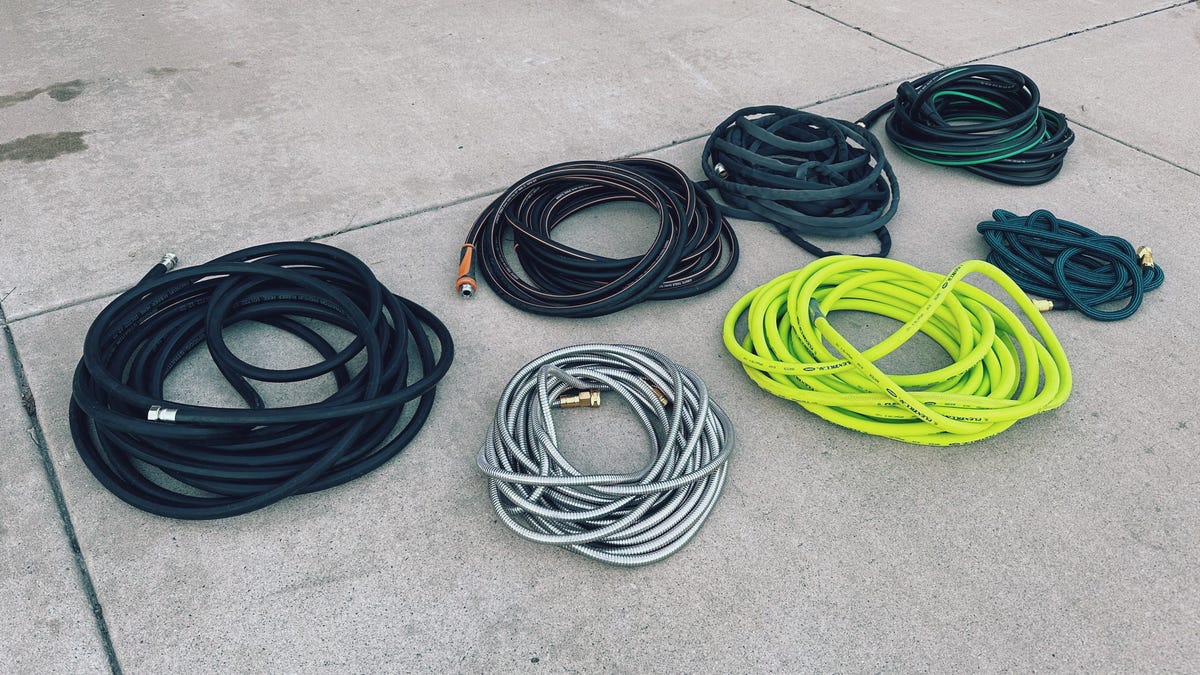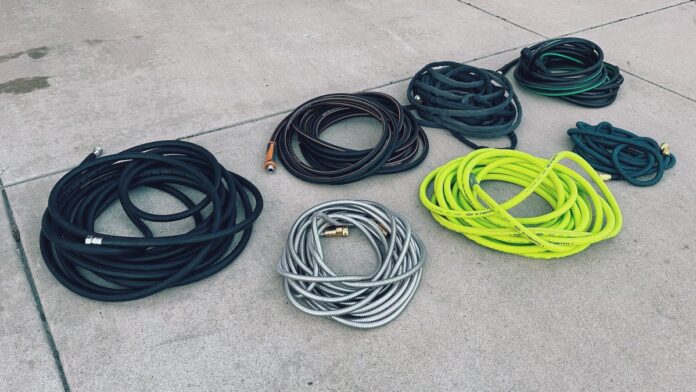
Kink resistance and flexibility
Hoses get dragged, pulled, twisted and caught on things, so you want one that will keep the water flowing when you do this. Most hoses use more rigid layers inside the hose, such as metal meshes or more rigid plastic to stop the hose from folding over and blocking the water flow. We tested all of these hoses to see how well they kept flowing when twisted and tangled.
Durability
A good hose can stand up to rough treatment, either from being dragged around, getting squished or pulled too hard or from the constant pressure they are under. Being constantly filled with water is also a strain, which can cause washers to fail and layers of the hose material to split. We found that all of these hoses were tough, but some were more resistant to things than others. In particular, some were more resistant to the depredations of hot water than others: the Dramm ColorStorm is the best pick if you think you might need to drain a hot water tank or a toasty hot tub.
Size and weight
The weight of these hoses varied from the feather-like Flexihose to the hefty ColorStorm and Continental. A lighter hose is easier to move and store, from dragging it to the end of the yard and coiling it up in the shed afterwards. One tip here: An empty hose is much easier to move than a full one.
Length
You might assume that the longer, the better, but longer hoses are heavier and more awkward to move and store. Instead, look at the space and think about how you will use it: if your yard is 75 feet long, but you have a sprayer head that can spray water to a bush 25 feet away, you may be fine with a 50-foot hose. Hoses are usually sold at 25, 50 and 75 feet long. However, longer hoses get heavy, especially when they’re full of water and are more prone to getting tangled and twisted.
Grips and fittings
Many of the hoses that we tested include shaped and contoured grips. These are great for two reasons: They’re more comfortable to hold, and they make it easier to attach them to sprayers and faucets. We’ve all struggled to attach a hose to an older faucet with a dodgy thread on the end and have used a wrench to tighten it. Hoses with a wider grip let you apply more force with your hands alone. It also means those with limited grip or strength can still use them.
Material and potability
Modern hoses are made from various materials, from the rubber of the Continental and Dramm hoses to the more flexible Polyether of the Hosecoil. Most are formed on a metal mesh that provides strength and rigidity.
Of all the hoses we tested, only the Flexzilla is labeled as safe to carry drinking water (the technical term is potable). “Potable water” is a term used by the US Environmental Protection Agency when drinking water meets federal standards for safe consumption. Materials like rubber and polyethylenes may contain lead — making it dangerous to drink water from them. That might not sound like a problem for most uses such as watering plants or bushes. But if you want to fill your kid’s pool, wash the dog or water your vegetable garden, it’s best to use safe, drinkable, lead-free water.


